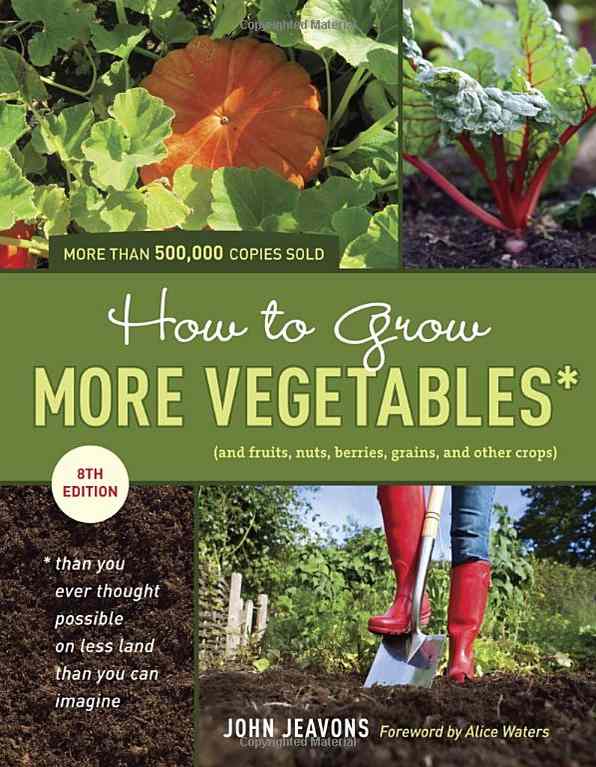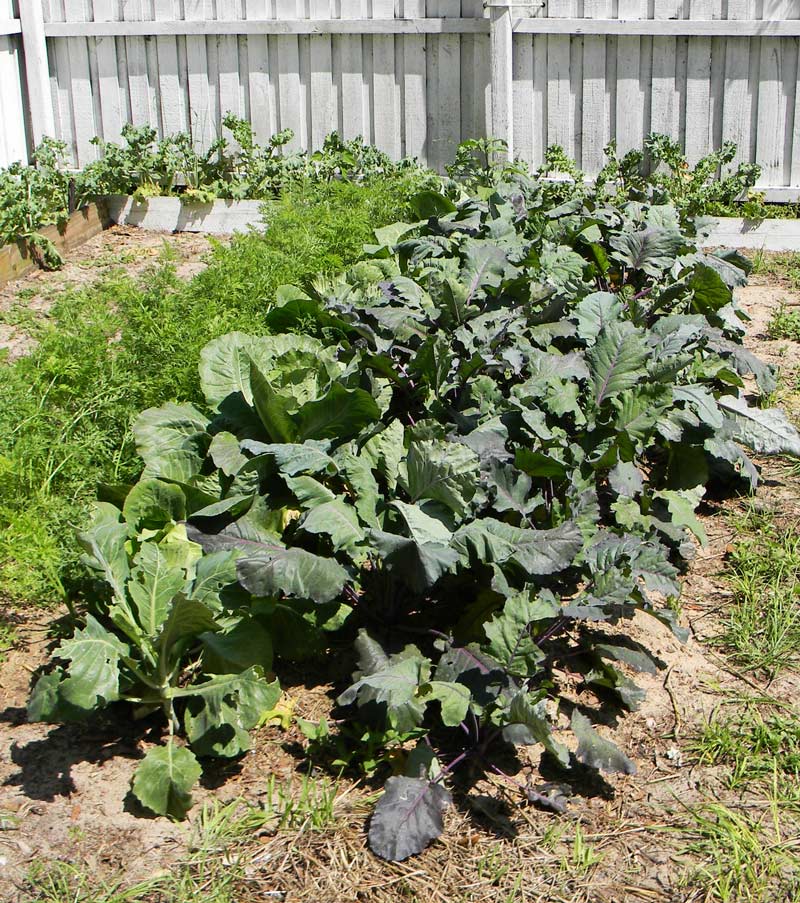I definitely believe double-digging is worth doing. As you can see in this post, the results are excellent. And take a look at this double-dug bed:
Why Double Dig?
I’ve double-dug multiple beds over the last year. Though it’s a total pain, those beds are much more productive than those I started without double-digging. They even beat my raised beds with perfect soil mixes – even though the double-dug beds are mostly sand.
Go figure. Double-digging grows me more food, so I do it. Plus, the exercise of double-digging is worthwhile.
Here is how you do it:
The best book on double-digging and growing tons of food in small spaces is this one:
 Pick up a copy and start getting more from your soil.
Pick up a copy and start getting more from your soil.



10 comments
May be they're more productive precisely because they're not raised :) YMMV of course but back when we tried to grow veggies, I noticed that raised beds perform dismally in FL. Sunken beds, on the other hand, were doing great and required much less maintenance. So pretty much anything all I do nowadays are inverted hugel-beds – sunken beds with some wood dug in. Additional bonus with those is that you can just add compost/mulch on the top and it'll find a way down itself.
Then again, I'm pretty brilliant when it comes to theories explaining why I shouldn't do things that smell or look like work :))
I think sunken beds are a very good idea. I just find the raised beds easy to work around and nicely controllable.
I planted in some trench-style beds last year and had poor yields but I believe that was because I didn't loosen the soil. I just dug, threw in compost, then planted.
How are the hugel beds working for you here in FL?
> I just find the raised beds easy to work around and nicely controllable.
They sure are. I'd love some table height beds :) But how fast will they go dry? Probably – very.
> I planted in some trench-style beds last year and had poor yields but I believe that was because I didn't loosen the soil.
Or may be water is not your limiting factor or may be you have too much of it even? We're on a sandy slope (up to 20%) here, so sunken beds did great (but to think about it – the terraces weren't too far behind) … They may be less of an advantage on flat wetter soil, I guess.
H-beds – From what I read about how they work in other places – they work about the same in FL, it's just that decomposition happens much faster here, so any wood less than 2" or so probably won't last over a year. On the other hand, I have a H-bed (raised) that I built about 5 years ago with 1'-2' diameter logs and it hasn't visibly collapsed yet … May be I need to open it and see what's going on there.
That reminds me of another experiment I did last summer – I dug a hole with a posthole digger and stuffed it with rolled up phone books and catalogues. Then I covered it with a bit of sand and planted cow-peas on the top of that hole and a few control holes (with nothing but sand inside). No irrigation except for the rain. Plants on top of yellow pages were about 3 times as big and lived a whole month longer into the Fall and almost made it to seed (I planted them pretty late, July, I think). I take it means that here water is the main limiting factor (and it's great to finally have a way to use them stupid catalogues for something good :)
Table height would rock, though that would be way too much infrastructure for me. And yeah… they'd go dry fast. You'd have to make them wicking beds.
I like the post-hole experiment. That's similar to something I'm doing in my front yard right now. I've been digging 2-3' deep holes, running about 3' in diameter. Then I light a fire in the bottom, dump in some sticks and weeds, let it burn for a few minutes, then dump in sticks, chunks of logs, compost, fresh manure, etc. and put the fire out. The sand out front is compacted and nutrient poor, so I'm hoping these spots will retain water, hold more nutrients and provide a nice loose space some things to get started. I've planted them with lentils and chickpeas right now, then in summer I'll plant them with squash, melons and other vines and let those run over the grass and continue shading out what's left of my lawn between the fruit trees.
Hearing that the phone-book plugs worked is really, really cool.
Yes, I'm about to start doing some serious double-digging. The trial beds I did this past year worked really well, and needed a lot less tending than anywhere else I planted.
I had some success with raised beds, but that's only because they were less than 6" tall and placed in the lowest-lying area of the yard, receiving lots of rain run-off, and I have a permanent sprinkler there.
I've decided I'm going to identify all low-lying areas and double-dig beds there. Time to get things in gear for 2013.
We just finished digging two more beds today, then planted one with kale and radishes, and another larger one with barley.
It's worth it. Last week we did two others. The entire back yard is rapidly filling up with garden spaces. Catch that runoff if you can – it's definitely a resource.
[…] have used this method of garden creation for some years now ever since reading John Jeavons’s book How to Grow More […]
For people stumbling across this, don’t be fooled. Double digging is a waste of time and effort. Side by side trials is the only way to see what works. I did it. 8 beds: 2 no-dig, 2 tilled, 2 plowed, 2 double dug. Each ground preparation method had one bed using synthetic fertilizer, and 1 using compost. Plowing, tilling and double digging all produced the same yield, 11-14% lower than no-dig on the compost, and the same as no-dig on the fertilizer. And the no-dig compost bed only needed watered once all summer, the other beds needed watering any time we went more than 3-4 days without rain. Unless you have compacted soil (if weeds are growing there then it isn’t compacted) then there is no reason to waste time and effort messing with the dirt, just dump compost on the ground and plant.
I’d like to see some pictures – that’s a good experiment.
[…] Dig a plot, pick out some seeds, plant something, turn your compost, feed the chickens, take down a branch to provide sunlight, put a fruit tree in the ground, shop for a better shovel… whatever needs doing, do it. One piece at a time and you will succeed. But if you lie around, you cannot expect to do well. […]
Comments are closed.